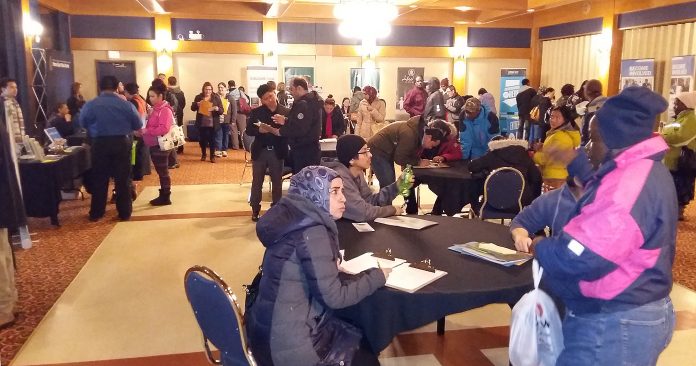
The job market continues to improve, both in Prince Albert and across the country.
The latest labour force estimates were released by Statistics Canada Friday, and they paint a rosy picture with more people working in January 2019 than at this time last year.
Locally, the number of people listed as employed has gone up from about 20,600 last year to an estimated 21,600 this year. The trend of more people entering the workforce and either working or looking for a job also continued, with the labour force increasing from 22,500 to 23,700.
The labour force counts residents who are either working or looking for work (unemployed). Residents not working and not looking are neither counted as unemployed or as being in the workforce.
With a small estimated population change of only 100 people and the increases in both people working and people looking, the unemployment rate has gone up slightly. The seasonally unadjusted rate has gone from 8.4 per cent in January 2018 to 8.9 per cent in January 2019. The employment rate, however, has also risen, growing from 60.4 per cent to 63.2 per cent. The participation rate went up a similar amount.
Local numbers are not adjusted for seasonality, meaning they shouldn’t be used to compare data month-to-month. The data can, however, be compared on a year-over-year basis.
Provincially, Saskatchewan lost 2,800 jobs in January as compared to December, according to seasonally-adjusted data from Statistics Canada. The unemployment rate continued to hover at about 5.5 per cent. Year-over-year, Saskatchewan gained 7,700 jobs.
Alberta also saw jobs fall for the second straight month, with 16,000 job losses in January. Unemployment in that province increased by 0.4 percentage points.
Elsewhere, though, including Quebec, Ontario, Nova Scotia, New Brunswick and Manitoba, jobs were added.
All told, the nation gained about 67,000 jobs in January, mostly among youth aged 15-24 and in the services-producing industries. The national unemployment rate went up by 0.2 percentage points to 5.8 per cent as more people looked for work.
Compared to January of 2018, Canada saw employment go up 327,000, or 1.8 per cent, with increases in full-time work, part-time work and hours worked. Canada’s employment rate, participation rate and unemployment rate were all higher than that of the United States, adjusting for US-based employment concepts.

